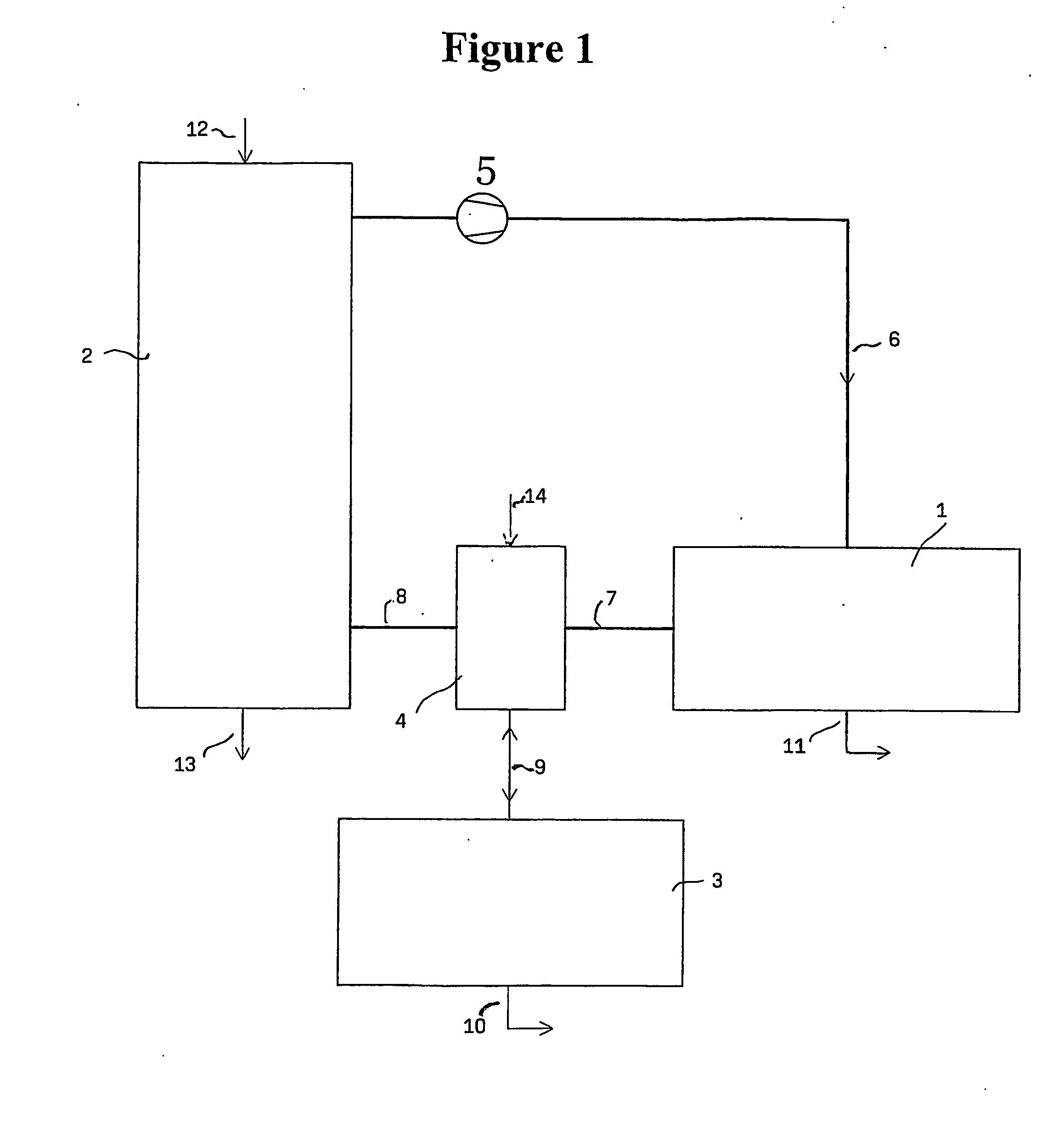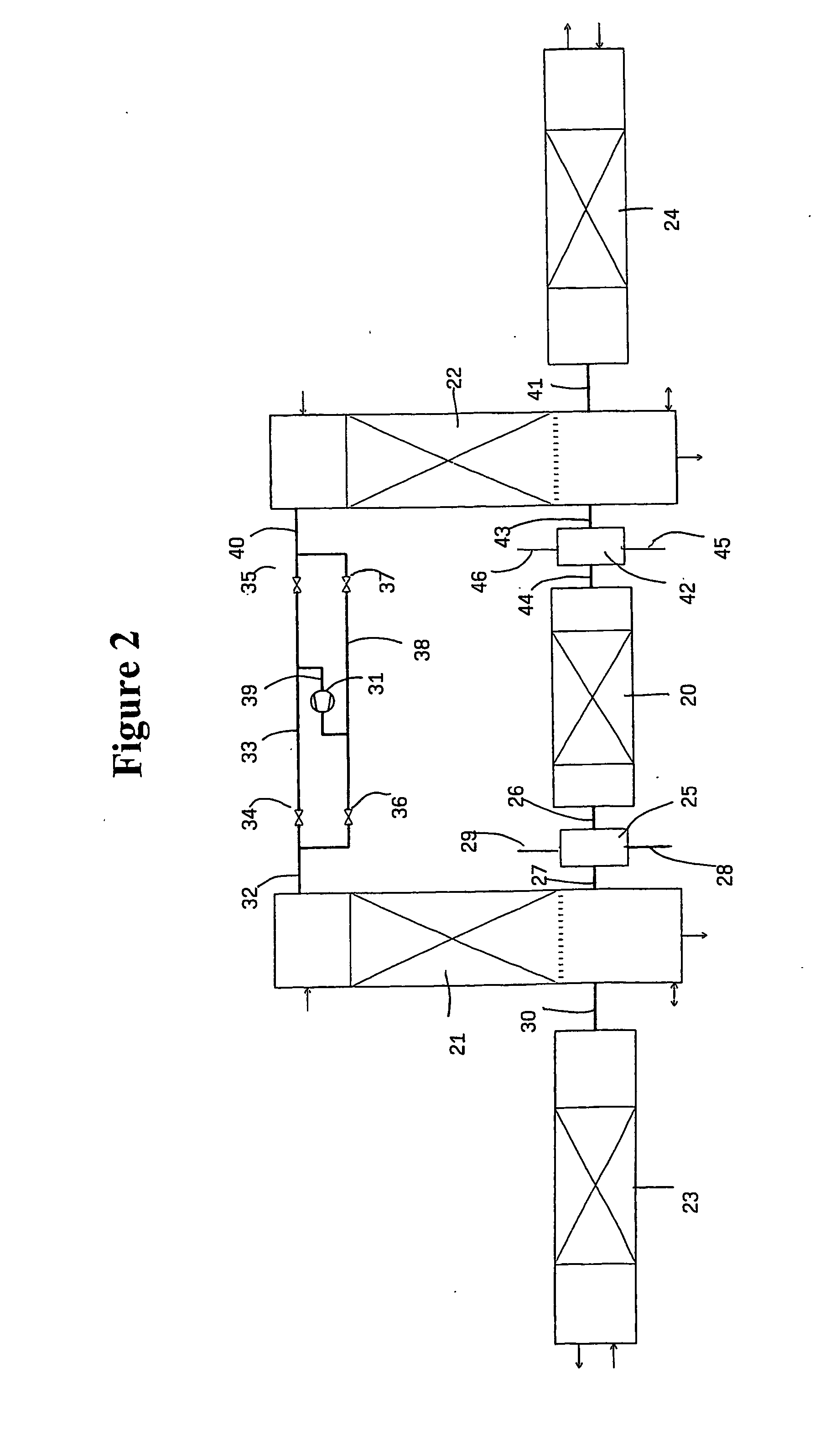Method and Apparatus for Producing Synthesis Gas From Biomass
a technology of biomass and synthesis gas, which is applied in the direction of combustible gas production, gasification process details, combustible gas chemical modification, etc., to achieve the effect of reducing the accumulation of by-products and unwanted chemicals in the reaction, reducing the energy consumption
- Summary
- Abstract
- Description
- Claims
- Application Information
AI Technical Summary
Benefits of technology
Problems solved by technology
Method used
Image
Examples
example 1
[0071] An apparatus as shown in FIG. 3 is used to produce synthesis gas from spruce chips.
[0072] In the first heating sequence the heat storing means are is heated with the heat generated by the combustion of air and propane for about 40 minutes so as to obtain a temperature of 1150-1200° C. During the first gas production sequence the heated gas is transported through the biomass, for about 3 minutes producing ca. 0.8 m3 / min of synthesis gas. Reheating of the heat storage with part of the produced synthesis gas to 1150-1200° C. takes about 15 minutes. The size of the circulating flow of synthesis gas in the system is about 2 m3 / min.
[0073] The chemical combination of the produced synthesis gas is:
Hydrogen40vol %Carbon monoxide25vol %Carbon dioxide15vol %Methane4vol %Hydrocarbons from C2100ppm.Oxygen1vol %Nitrogen7vol %
example 2
[0074] An apparatus as shown in FIG. 2 is used to produce synthesis gas from spruce chips.
[0075] In the first heating sequence the heat storing means are is heated with the heat generated by the combustion of air and propane for about 40 minutes so as to obtain a temperature of 1150-1200° C. During the first gas production sequence the heated gas is transported through the biomass, for about 3 minutes producing ca. 0.8 m3 / min of synthesis gas. Reheating of the heat storage with part of the produced synthesis gas to 1150-1200° C. takes about 15 minutes. The size of the circulating flow of synthesis gas in the system is about 2 m3 / min.
[0076] The chemical combination of the produced synthesis gas is:
Hydrogen21vol %Carbon monoxide40vol %Carbon dioxide8vol %Methane2vol %Hydrocarbons from C2550ppm.Oxygen1vol %Nitrogen27vol %
PUM
| Property | Measurement | Unit |
|---|---|---|
| temperature | aaaaa | aaaaa |
| temperature | aaaaa | aaaaa |
| temperature | aaaaa | aaaaa |
Abstract
Description
Claims
Application Information
 Login to View More
Login to View More - R&D
- Intellectual Property
- Life Sciences
- Materials
- Tech Scout
- Unparalleled Data Quality
- Higher Quality Content
- 60% Fewer Hallucinations
Browse by: Latest US Patents, China's latest patents, Technical Efficacy Thesaurus, Application Domain, Technology Topic, Popular Technical Reports.
© 2025 PatSnap. All rights reserved.Legal|Privacy policy|Modern Slavery Act Transparency Statement|Sitemap|About US| Contact US: help@patsnap.com



